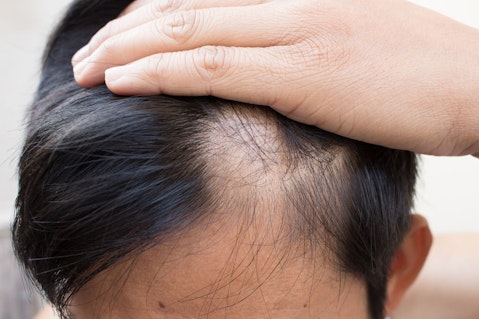In this article, we will take a look at the 20 countries with the highest rates of hair loss. To see more such companies, go directly to 5 Countries with Highest Rates of Hair Loss. You can check out our article about the 12 Best and Cheapest Countries for a Hair Transplant by clicking the link.
Globally, hair loss is a common issue that many people experience. Even though having a full head of hair isn’t as essential to our overall physical health, it still conveys significant symbolic significance in Western culture and beyond. The absence of hair is mistakenly interpreted as a sign of premature aging and less desirable characteristics despite hair conveying vitality and vigor. Many individuals experiencing hair loss internalize these unfair assessments, resulting in a decline in self-esteem and increased anxiety regarding their appearance.
The perception of hair as a reflection of one’s character or desirability is far from objective reality. Baldness, often equated with aging, is a misconception that has persevered across generations. In contrast, hair has historically been a symbol of strength and virility in various cultures, revealing the intricate web of interpretations woven around this seemingly trivial aspect of our appearance. Many who experience thinning hair or balding tend to internalize societal expectations, leading to a notable decline in self-esteem and a surge in appearance-related anxiety.

Copyright: wasansos1 / 123RF Stock Photo
Our Methodology
To determine which country has the highest rate of hair loss, a thorough investigation was conducted using scholarly articles from five distinct sources (1, 2, 3, 4, 5) that mentioned the baldness rates by country. The prevalence of hair loss among populations in various countries is evaluated and ranked based on what percentage of the population is affected. In addition, one point is awarded for each instance in which a country is included on the list of a particular source. Then, these criteria were used to create a hierarchical classification and determine the top 20 countries with the highest hair loss rate.
The 20 countries with the highest hair loss rates and the percentages of their populations afflicted are listed below.
20 Countries with Highest Rates of Hair Loss
20. Finland
Baldness Rate: 29.96%
Hair loss is a prevalent issue among a significant number of women in Finland. A study showed that females exhibiting certain indicators of insulin resistance are at a considerably higher risk for female androgenetic alopecia. The prevalence of a paternal history of alopecia appears to be higher in females with androgenetic alopecia compared to women who experience normal or little hair loss. Additionally, Finland is also part of the top 20 countries with the highest rates of hair loss for males.
19. Ireland
Baldness Rate: 30.18%
According to a recent study, nearly half (49%) of young Irish males aged below 30 perceive themselves to be encountering varying degrees of hair loss. The observed data is rather unexpected, as hair loss is generally associated with advancing age. According to prevailing norms, only 30% of men within this demographic should be experiencing hair loss problems. Hair loss can arise from several circumstances, exhibiting varying degrees of permanence. Hair loss resulting from male pattern balding is typically irreversible if not treated, whereas disorders associated with stress, such as telogen efflux, tend to spontaneously recover over a period of time. Irrespective of the underlying factors contributing to the observed phenomenon of hair loss, it is noteworthy that over half (49%) of males below the age of 30 exhibit this condition, which can be considered a significantly elevated proportion.
18. Portugal
Baldness Rate: 30.98%
Hair loss is a prevalent condition among approximately 30% of the Portuguese population. Fortunately, there are a number of surgeons specializing in hair loss treatment who are located in Lisbon and other towns in Portugal, and they are recognized as experts in their field on a global scale. The pricing offered at the clinics is rather appealing, and the healthcare professionals and medical staff who are experienced in attending to overseas patients are often proficient in multiple languages, including English, Spanish, and Portuguese.
17. Denmark
Baldness Rate: 31.3%
In Denmark, a significant proportion of individuals, approximately 31% percent, experience the issue of hair loss, affecting both men and women. As a result, these individuals critically assess their appearance when facing their reflection, adopting a perspective similar to that of a medical professional. Fortunately, Denmark offers a diverse range of hair solutions that can effectively mitigate the issue of hair loss and thinning.
16. Austria
Baldness Rate: 31.75%
For Austrians, the occurrence of hair loss frequently leads to a decline in an individual’s overall state of well-being and self-assurance. Certain individuals suffering from hair loss may also encounter the occurrence of hair loss and subsequently develop psychological complications. Hair transplants are frequently provided in Austria, where the procedure involves the extraction of a patient’s own hair from the occipital region of their scalp, followed by its subsequent implantation onto the vertex, hairline, or other regions experiencing hair thinning or baldness.
15. Norway
Baldness Rate: 31.84%:
A considerable percentage of Norwegian males between the ages of 26 and 50 have indicated through self-reporting that they experience varying degrees of hair loss. The findings indicate that those who identify as male and see themselves as experiencing more pronounced hair loss exhibit heightened distress regarding their hair loss, more dissatisfaction with the aesthetic aspects of their hair, and greater apprehension around the process of aging and further hair loss.
14. Greece
Baldness Rate: 31.9%
The issue of hair loss has been observed to be widespread since ancient Greece. Hippocrates, the renowned ancient Greek physician, purportedly encountered male pattern baldness and attempted to address it by formulating an ointment of beets, horseradish, opium, pigeon droppings, and spices. Regrettably, this concoction did not provide the desired outcome of preventing hair loss. Hippocrates additionally formulated a groundbreaking therapeutic approach for alopecia, prompted by his observation that eunuchs did not have hair thinning in the crown region.
13. Sweden
Baldness Rate: 32.76%
Hair loss is a prevalent dermatological problem that impacts individuals of all genders and age groups within the Swedish population. Hair loss can significantly impact an individual’s self-image and self-expression in Sweden, where hair holds considerable importance. Hair harbors significant symbolic connotations, with the notion of “healthy hair” often entailing conceptions of physical attractiveness, allure, aesthetic appeal, social status, and authority for Swedish citizens. Furthermore, hair has the ability to convey a message, encompassing both cultural heritage and social associations.
12. Australia
Baldness Rate: 32.83%
Hair loss can significantly affect the confidence and self-esteem of individuals residing in Australia. Androgenetic alopecia, also referred to as male-pattern hair loss, is a prevalent condition that affects a significant proportion of the population in Australia. It is characterized by the gradual thinning and loss of hair, with around 70% of men and 40% of women being affected by this condition. The primary cause of hair loss in both men and women is attributed to the occurrence of female and male pattern hair loss, also referred to as androgenic alopecia. This condition is predominantly influenced by genetic factors.
11. Switzerland
Baldness Rate: 33.81%
Alopecia, a condition commonly referred to as baldness, has a significant impact on a considerable number of individuals residing in Switzerland. Hair loss can exert a notable psychological influence, particularly among young males and females residing in Switzerland. Fortunately, the advancement and refinement of the hair transplantation procedure in Switzerland, commonly referred to as capillary implantation, have significantly transformed the field of cosmetic surgery for individuals experiencing baldness. The utilization of capillary micro-grafting techniques offers the potential to minimize the significance of surgical interventions and the subsequent formation of scars.
10. Belgium
Baldness Rate: 36.02%
The prevalence of androgenetic alopecia is widespread among the population of Belgium. Hair loss and baldness can significantly affect an individual’s self-confidence in Belgium. Fortunately, in modern times, there exists the possibility of considering a lasting resolution through the utilization of a hair transplant procedure. The cost of hair transplantation in Belgium has minimal or negligible variation when compared to the rates in the Netherlands. Belgian hair clinics are known for their efficient scheduling practices, resulting in reduced waiting periods, and have established a favorable reputation in the field. In contemporary times, individuals of both genders who experience dissatisfaction with their hair and endure hereditary hair loss are progressively turning to the practice of hair transplantation. Individuals who live in the border region may have a predilection for seeking medical treatment in Belgium.
9. Canada
Baldness Rate: 36.29%
Androgenetic alopecia, commonly referred to as male pattern baldness, is prevalent among around 50% of Canadian males by the time they reach the age of 70. By the time women reach the age of 50, around 40% of them experience female pattern baldness. Although there is no need for shame, a significant number of Canadians express concerns about the potential confidence-related consequences associated with experiencing baldness. Specifically, 59.1% of women and 40.9% of men reported that baldness could have an impact on their overall confidence.
8. United States
Baldness Rate: 37.89%
Androgenetic alopecia is the prevailing kind of hair loss, impacting a population of over 50 million males and 30 million females in the United States. Androgenetic alopecia, also referred to as male-pattern hair loss or female-pattern hair loss, is a hereditary condition that can be effectively treated by the use of medication or surgical interventions. Moreover, it should be noted that hair loss is a prevalent adverse outcome associated with chemotherapy treatment. Alopecia areata has been shown to impact a considerable population of individuals in the United States, with estimates suggesting that the condition affects up to 6.8 million people.
7. Netherlands
Baldness Rate: 38.9%
A hidden phenomenon exists within the male population of the Netherlands. The phenomenon commonly referred to as “the typical receding Indo hairline” is a subject of study. Among individuals of Dutch descent with Indonesian ancestry, regardless of the specific percentage (whether it be 50% or 12.5%), it is frequently observed that men experience a rapid recession of their hairline in a downward direction. The process of balding may commence as early as the age of 20, resulting in a physical appearance reminiscent of that of the fictional character George Costanza prior to reaching the age of 30.
6. Italy
Baldness Rate: 39.17%
The prevalence of female baldness is on the rise, with almost one in four women in Italy experiencing this condition. Hair loss affects 25% of women in Italy. The condition being referred to is known as alopecia. Hair loss, traditionally associated with males, has progressively emerged as a concern among females in recent times. Several factors contribute to hair loss in Italy. There are several potential factors that may contribute to the development of certain conditions, including but not limited to stress, hereditary susceptibility, excessive cosmetic treatments, menopause, nutritional problems and deficiencies, and hormonal imbalances or shifts, such as those experienced during pregnancy.
5. United Kingdom
Baldness Rate: 39.23%
According to a prominent hair loss clinic in the United Kingdom, over 40% of women and one-third of men aged 25 and above experience difficulties related to hair loss. There are various mechanisms by which individuals may experience hair loss, ranging from temporary to permanent conditions. Certain types of hair loss in the United Kingdom are considered permanent. However, it is important to note that there are other cases of temporary hair loss, which can be attributed to several circumstances, including stress, illness, weight loss, or even a shortage of iron. Predominantly, the most commonly observed manifestation of hair loss among individuals is attributed to a medical disorder known as pattern baldness, scientifically referred to as androgenetic alopecia. Pattern baldness, also known as androgenetic alopecia, is a genetic trait that manifests in individuals of both genders.

Pixabay/Public Domain





